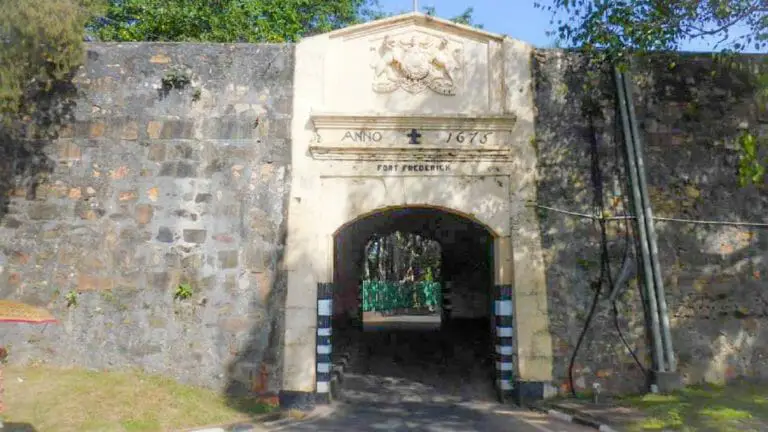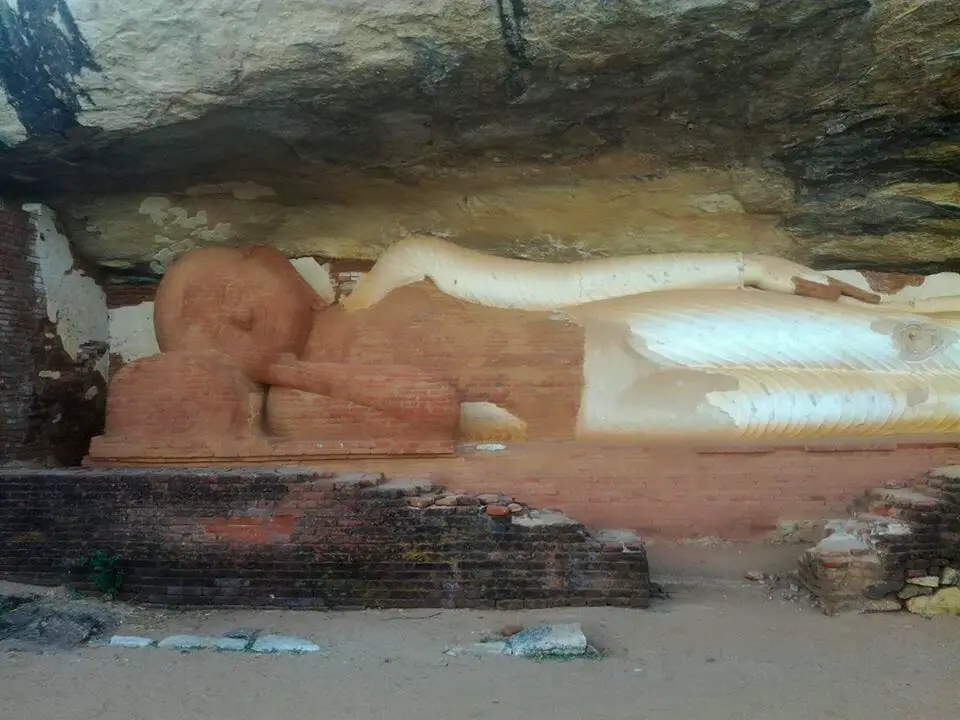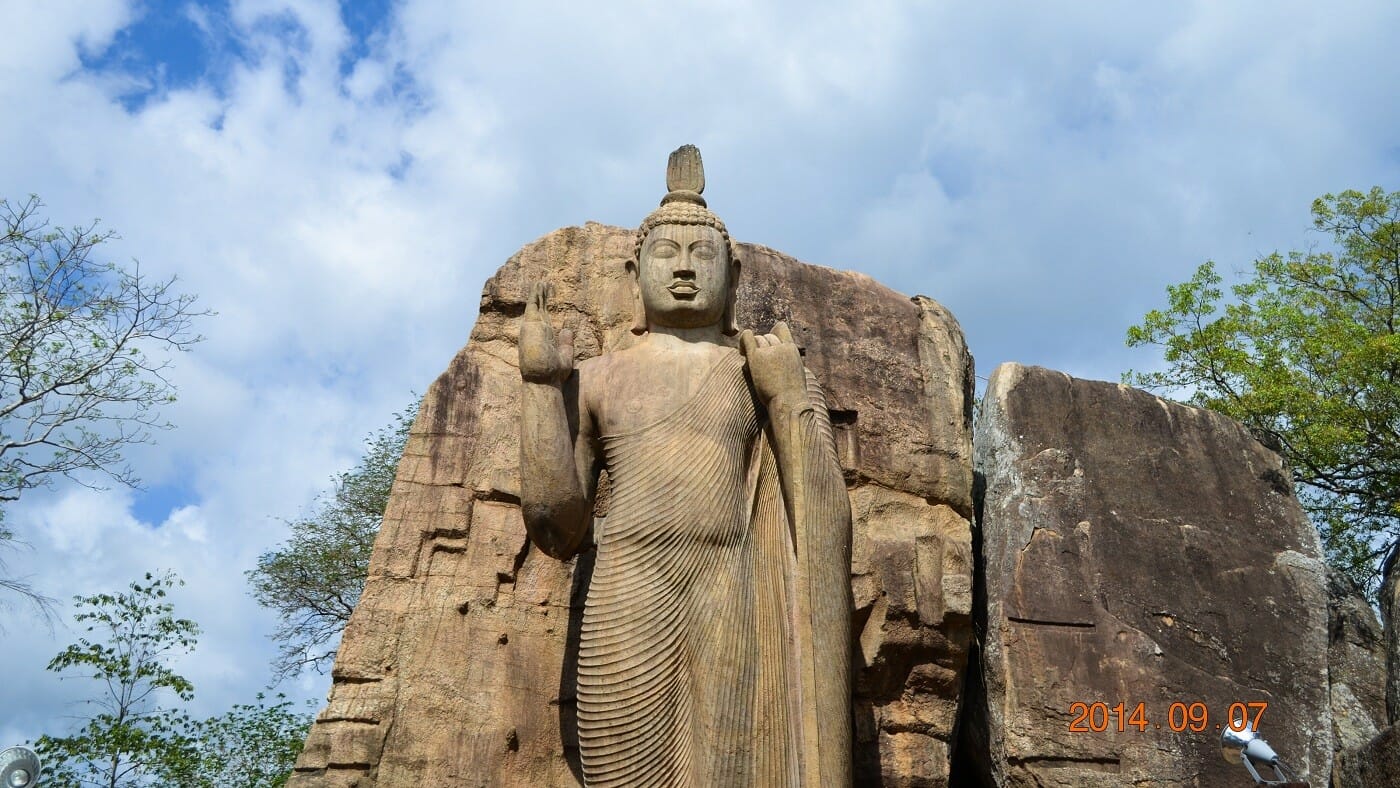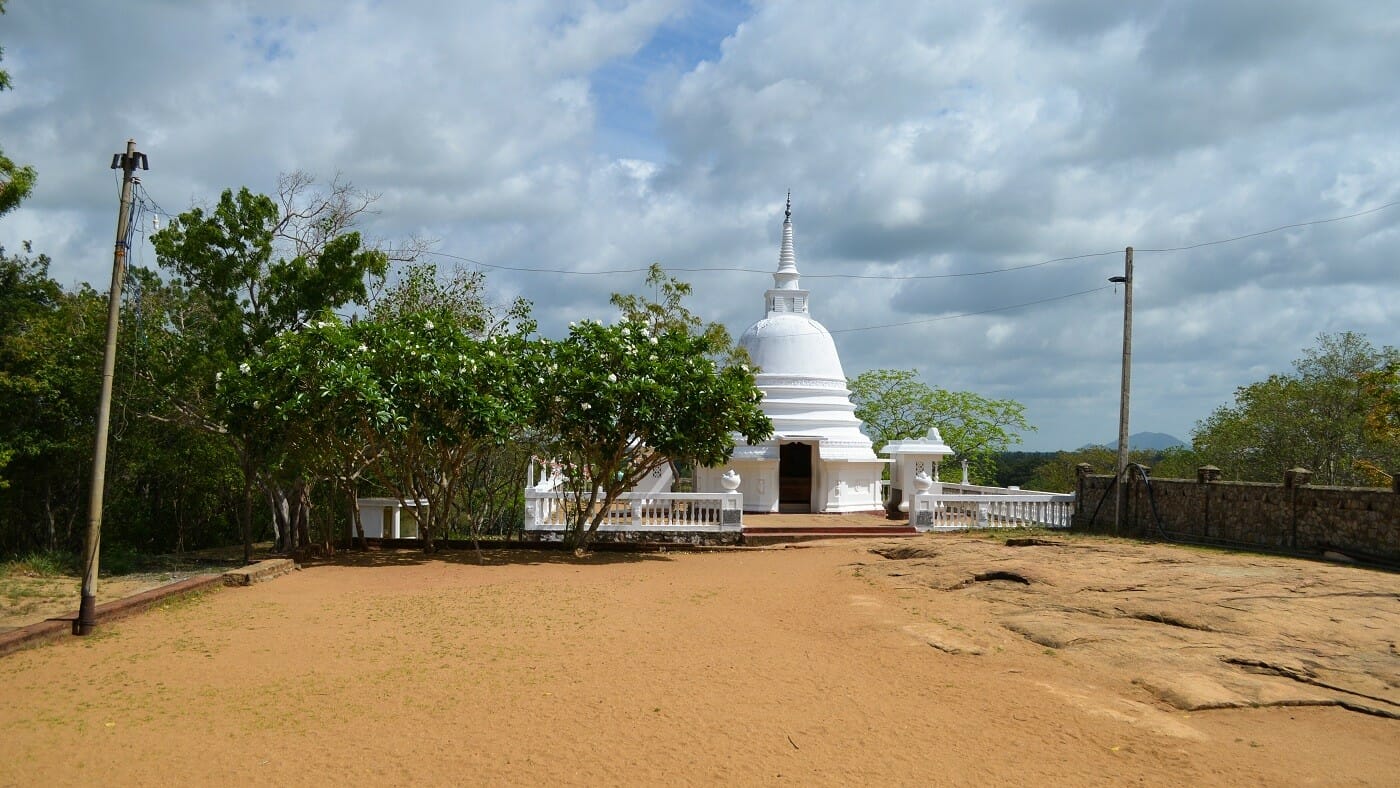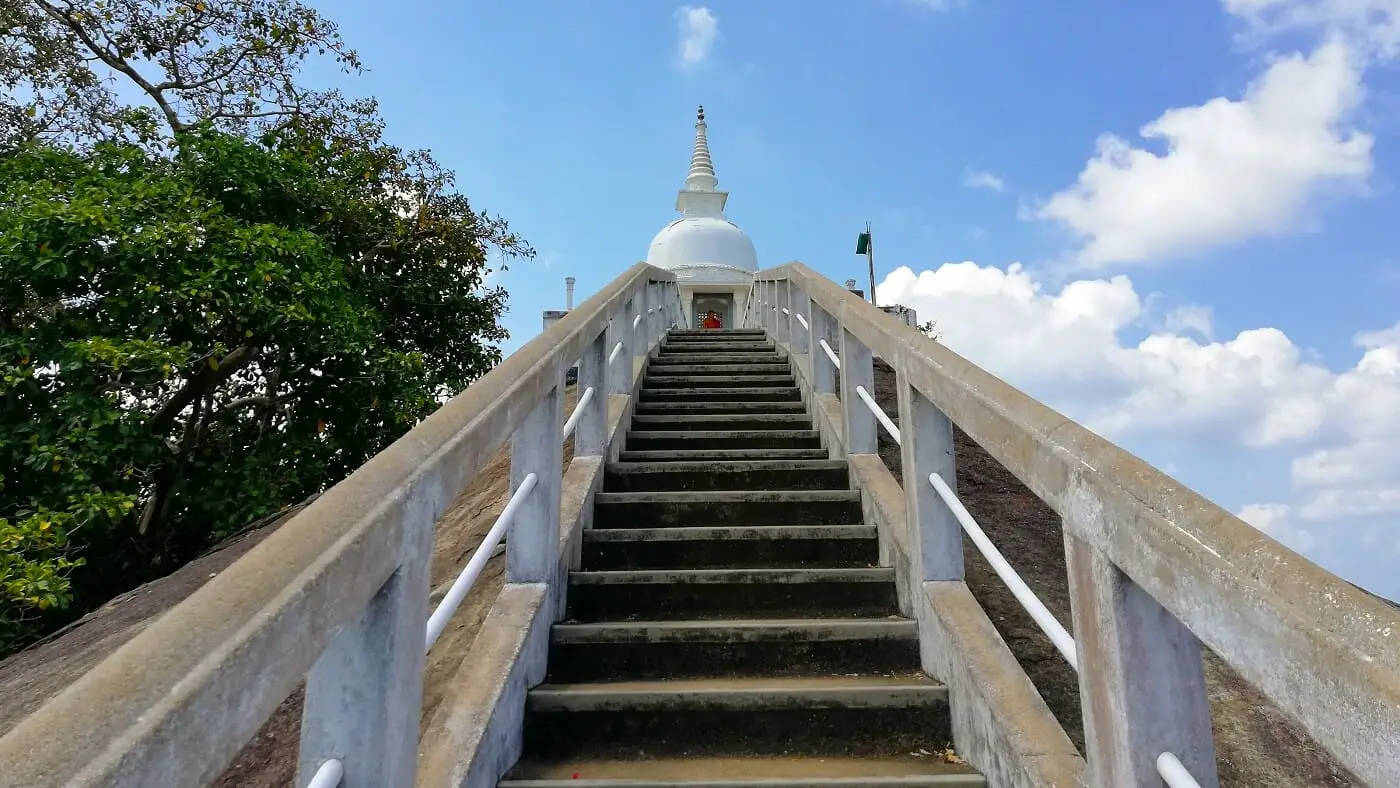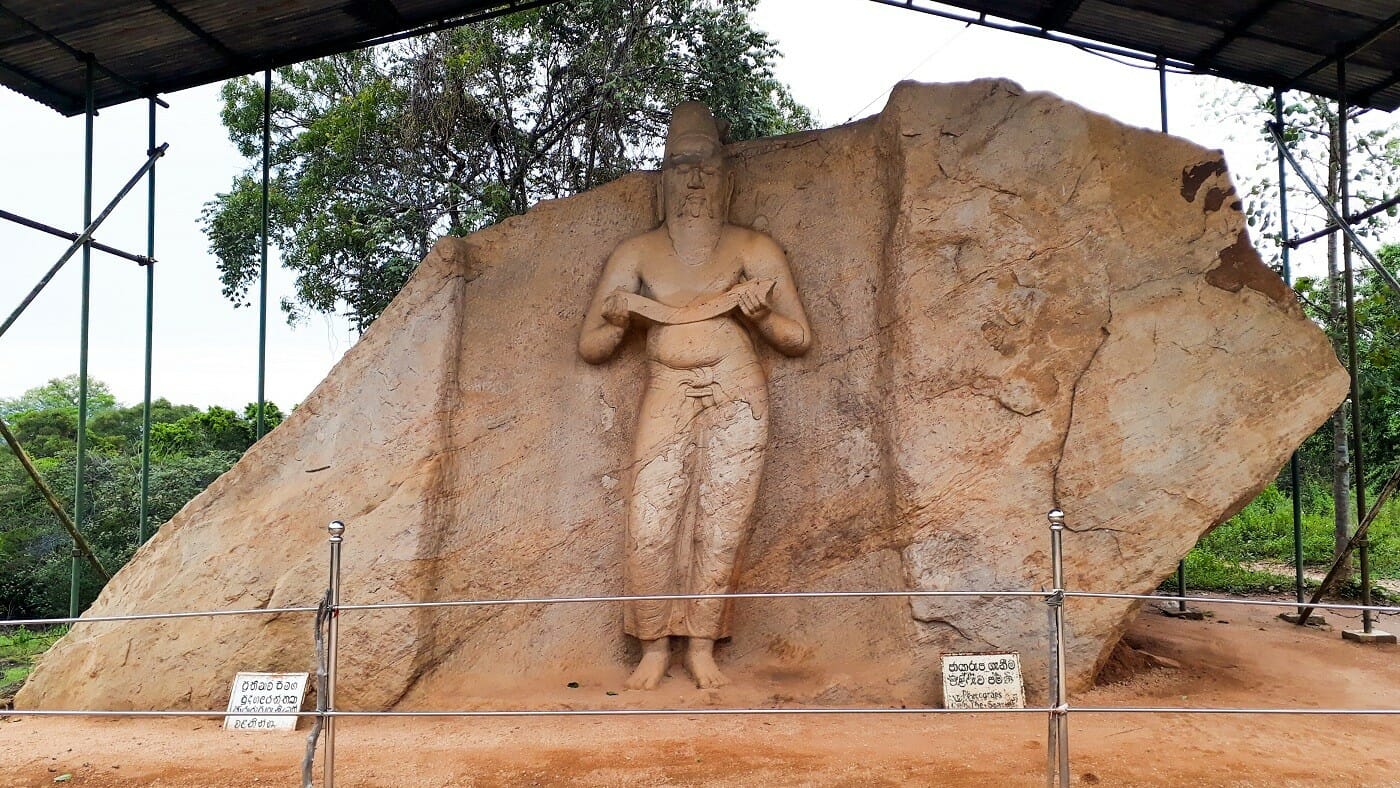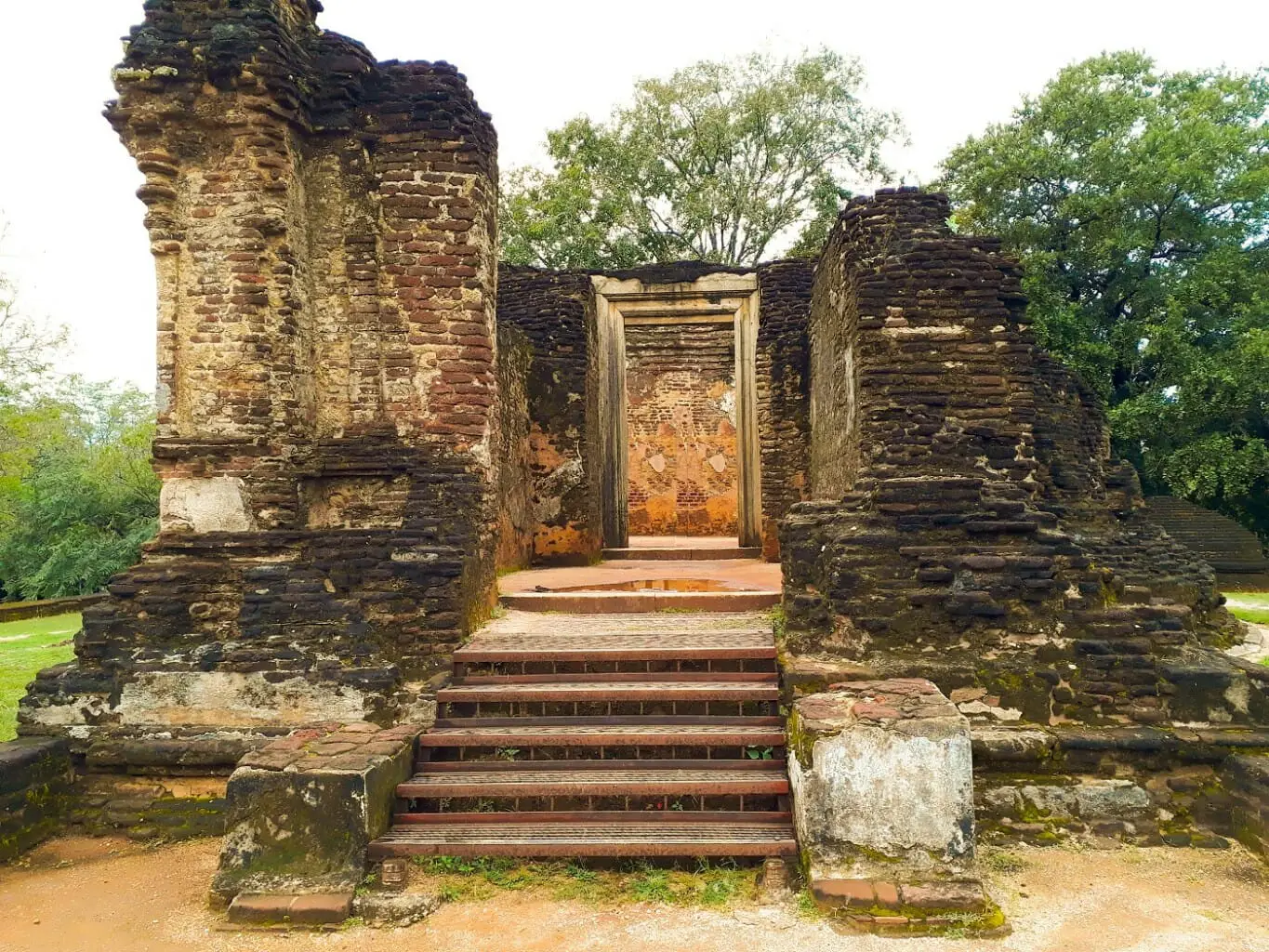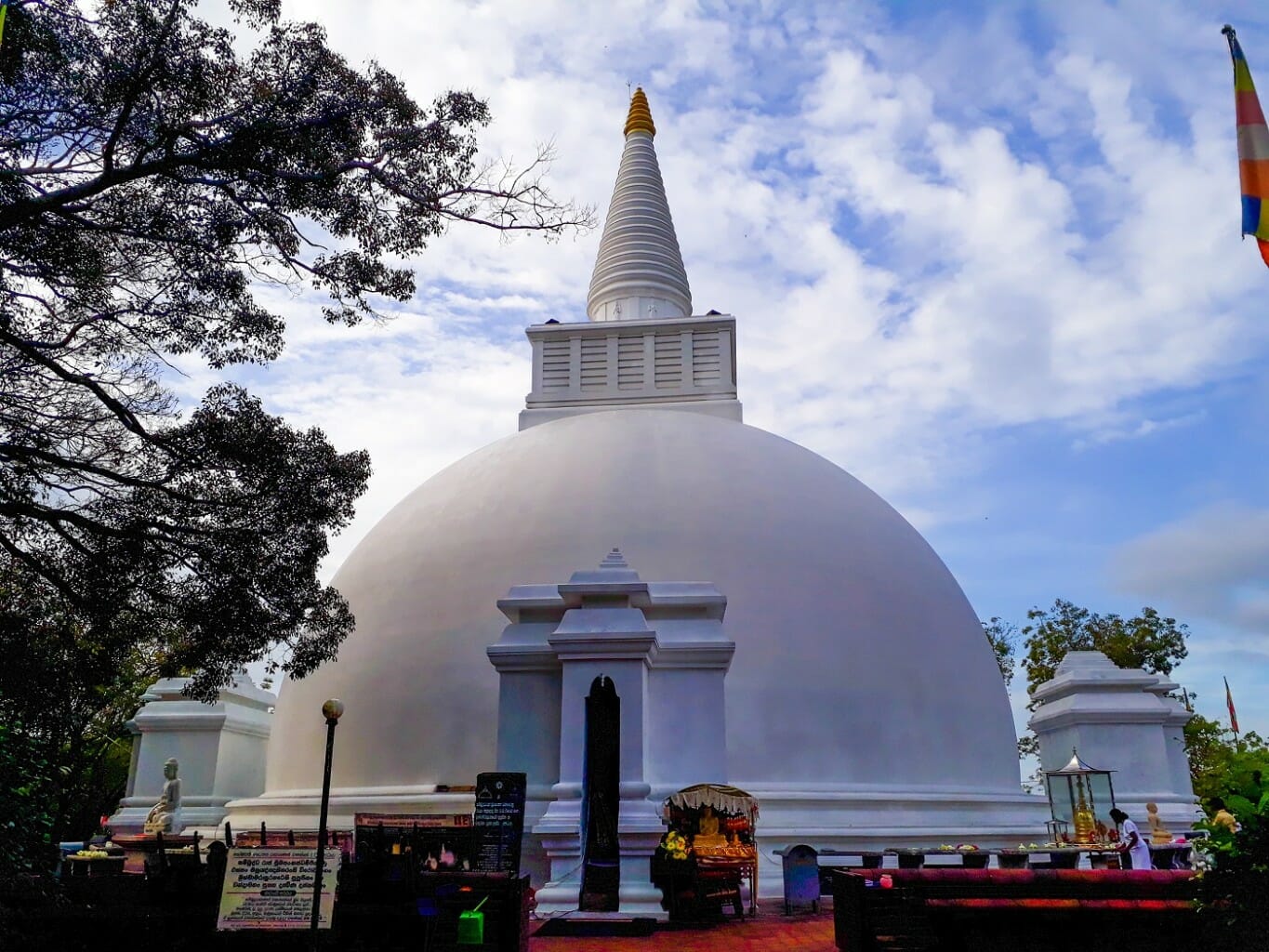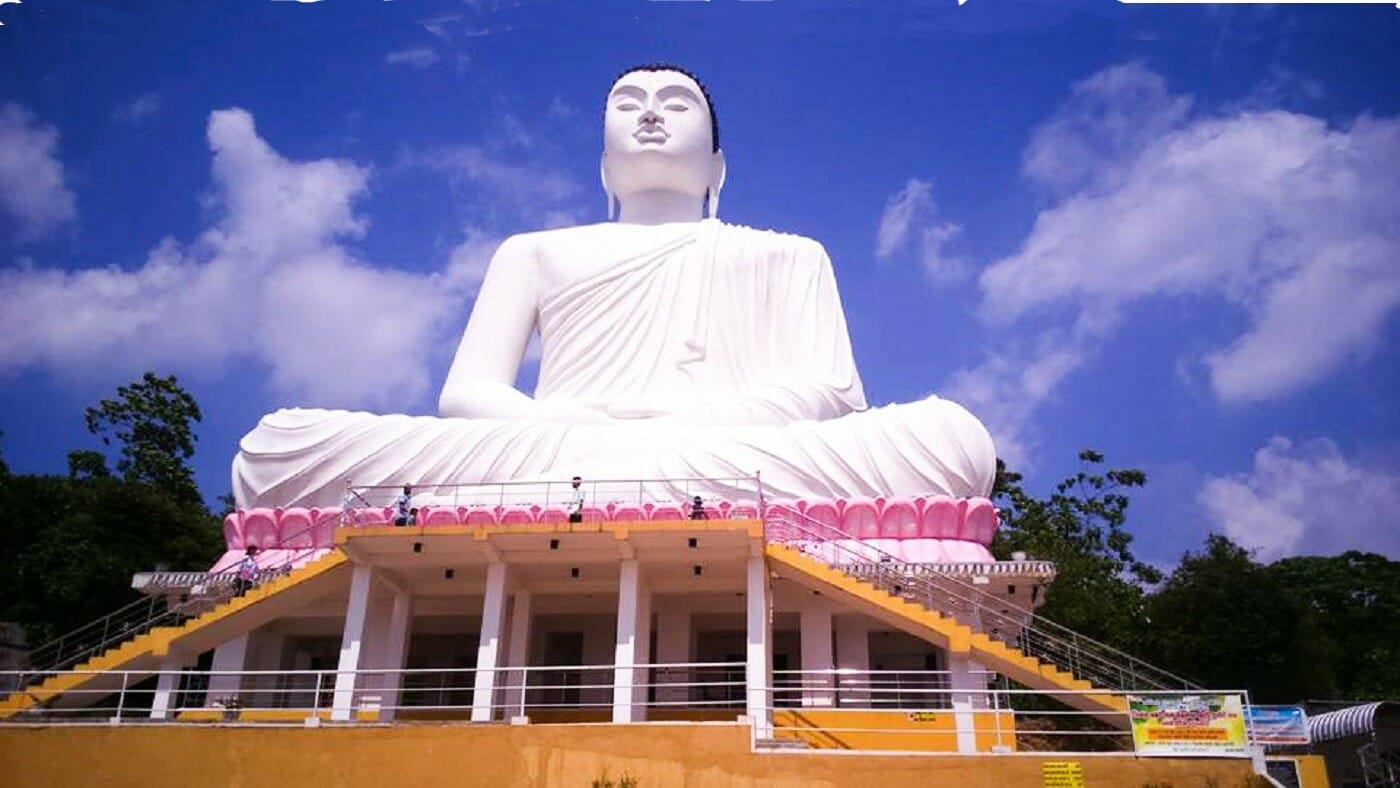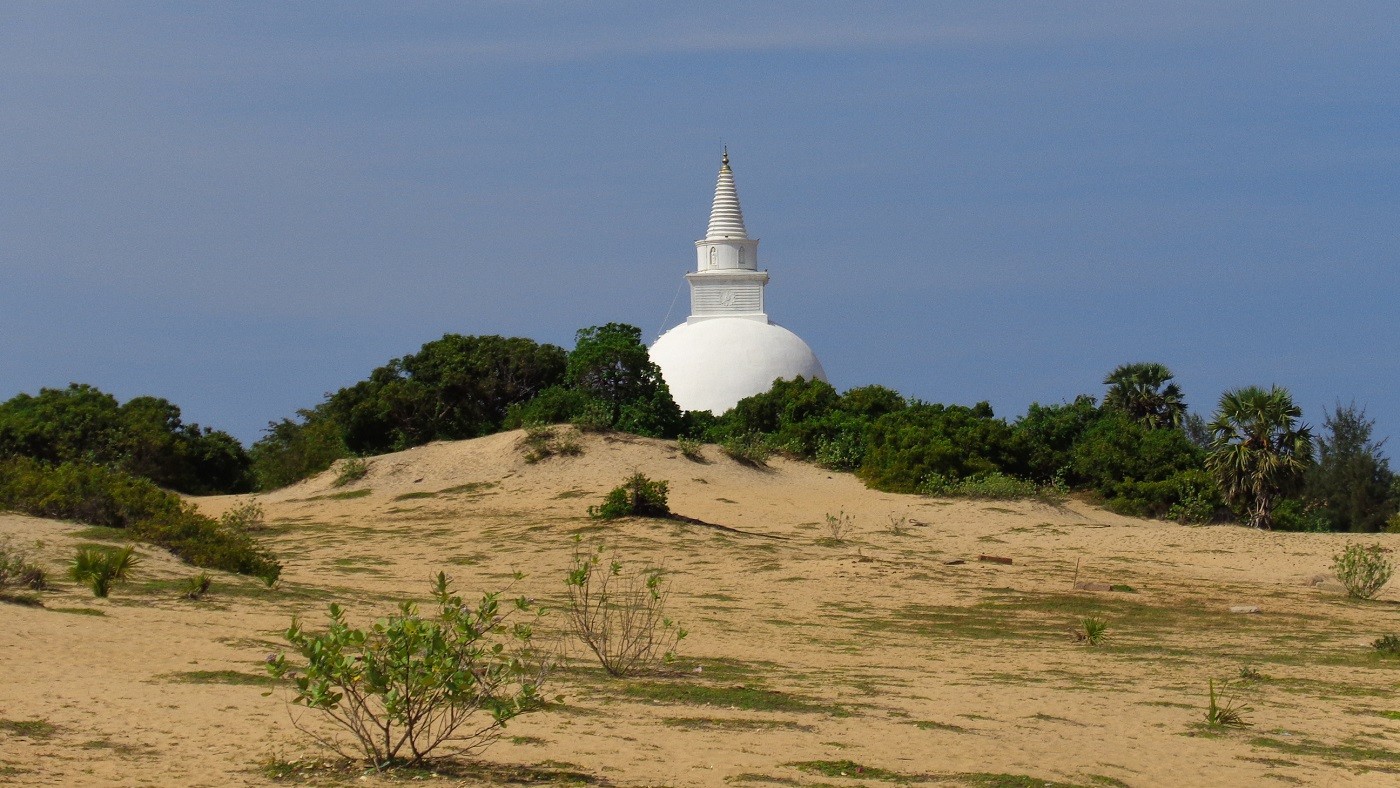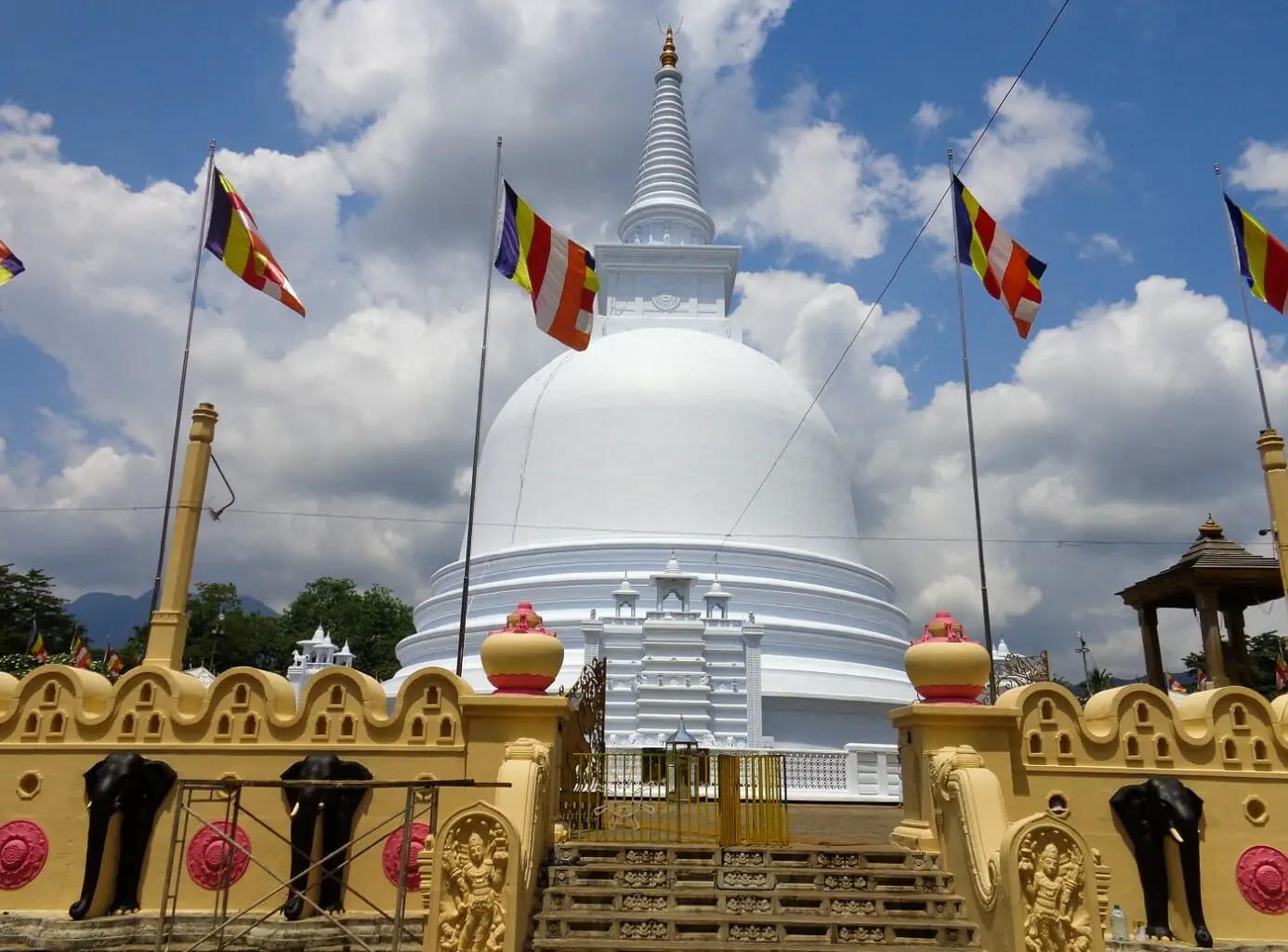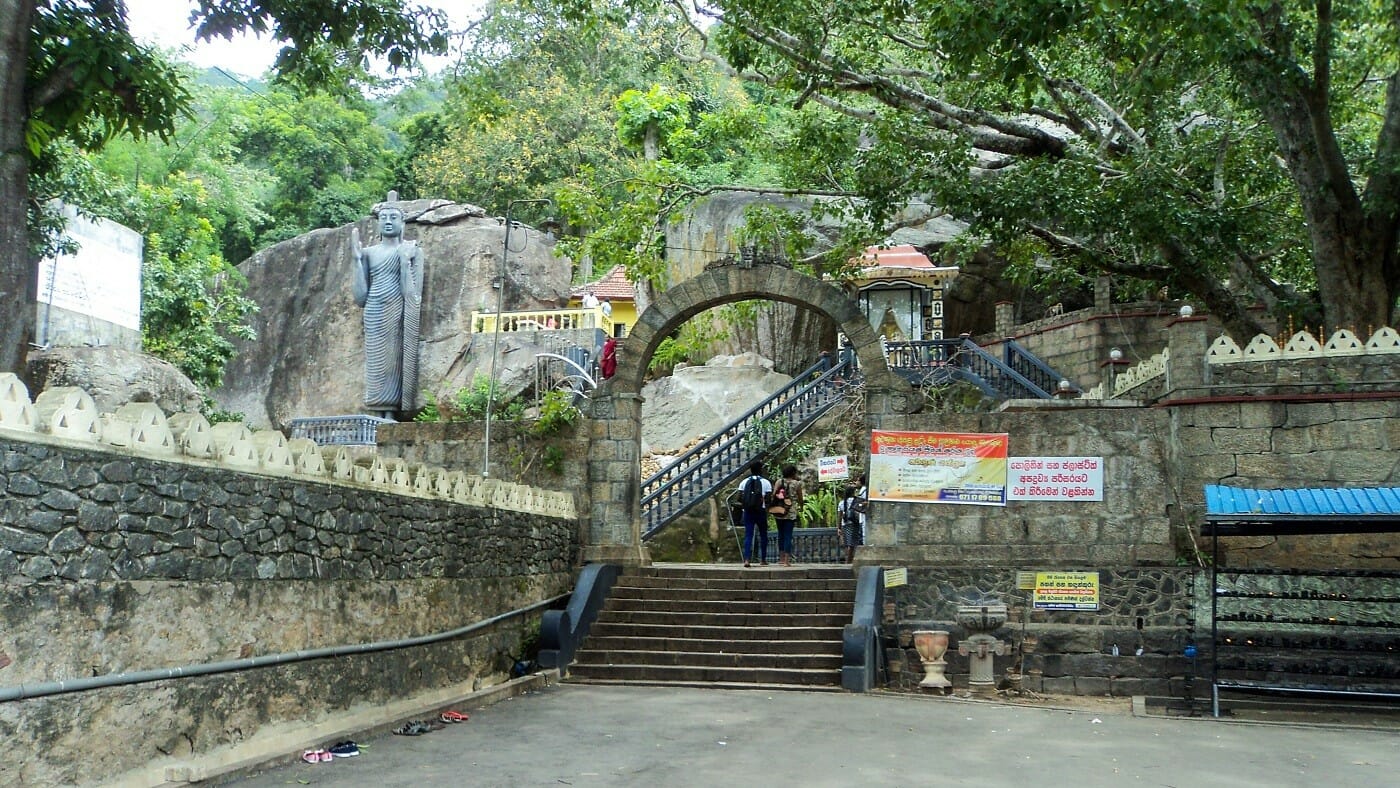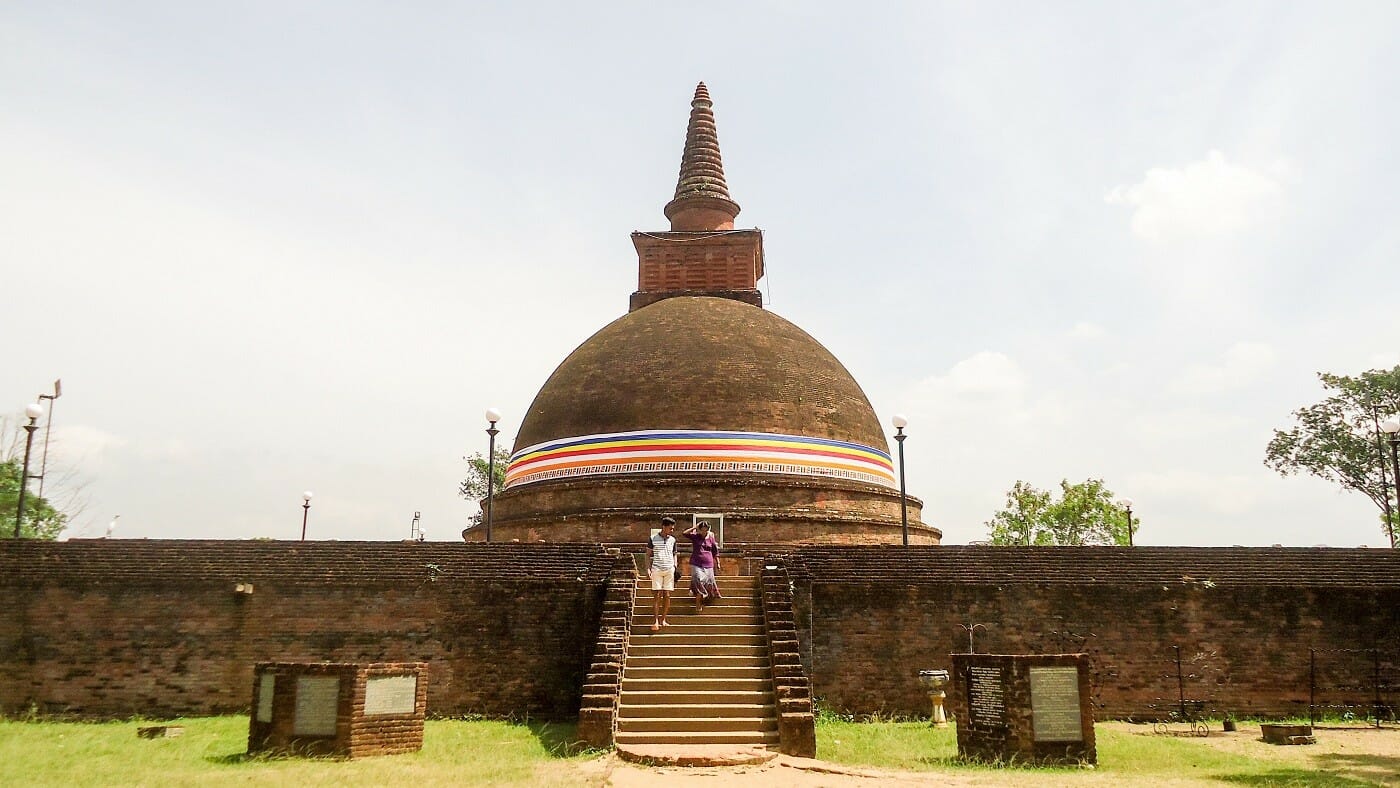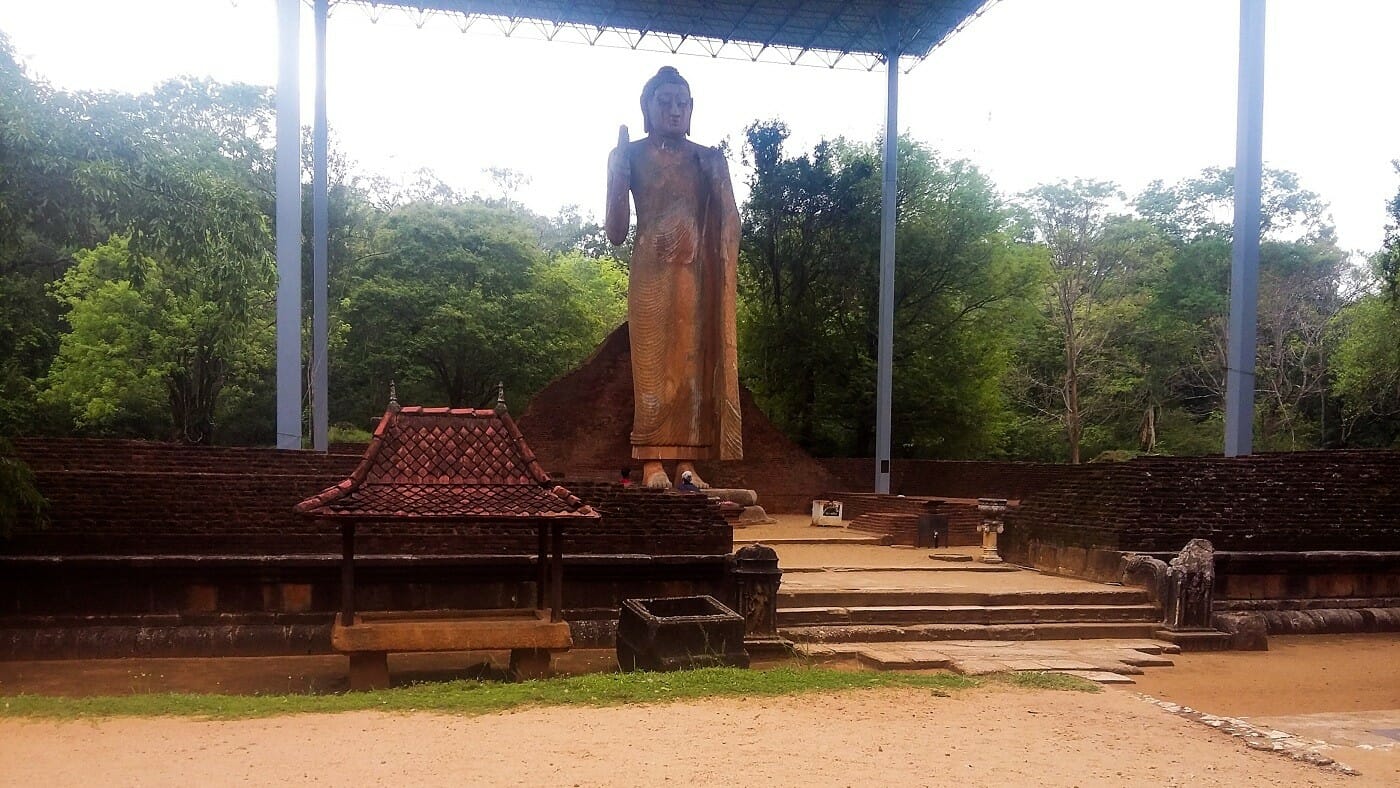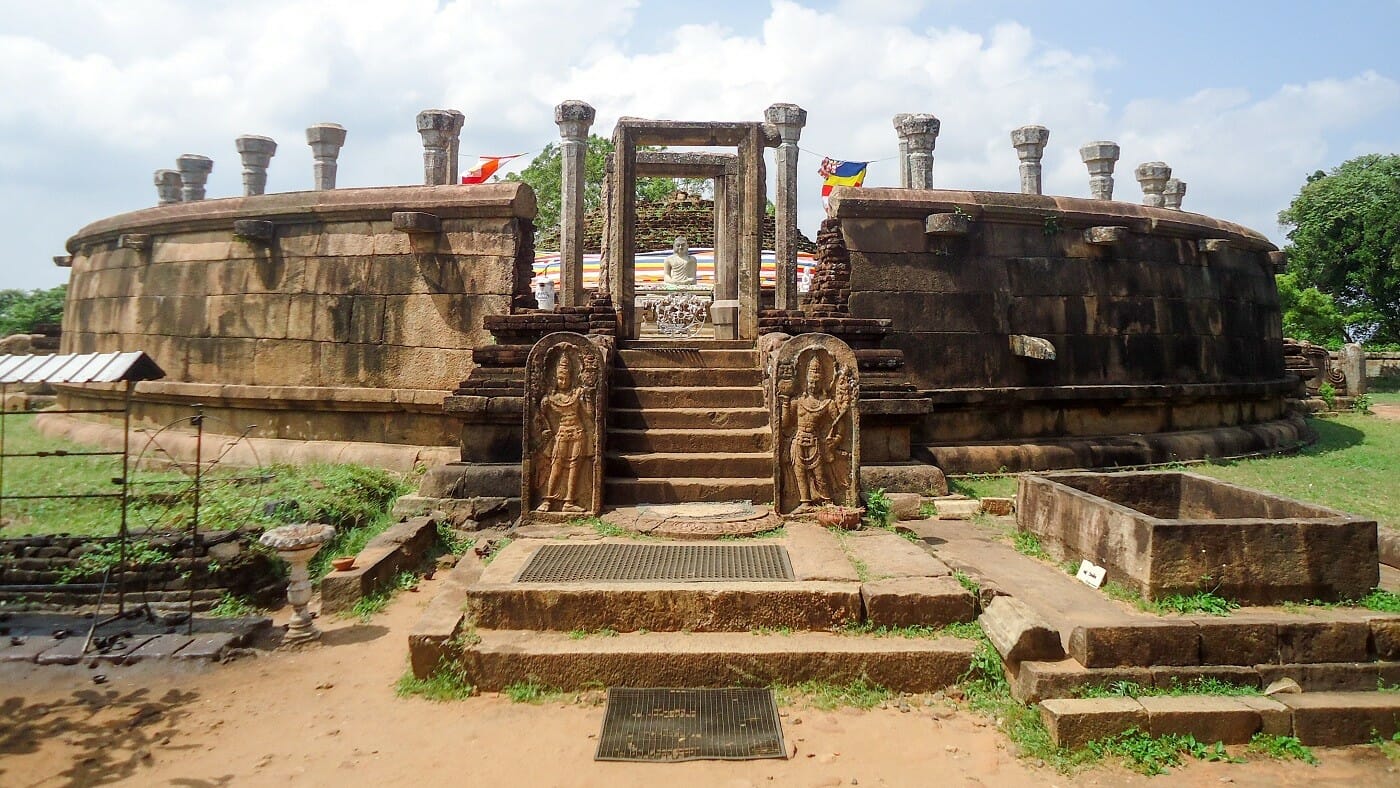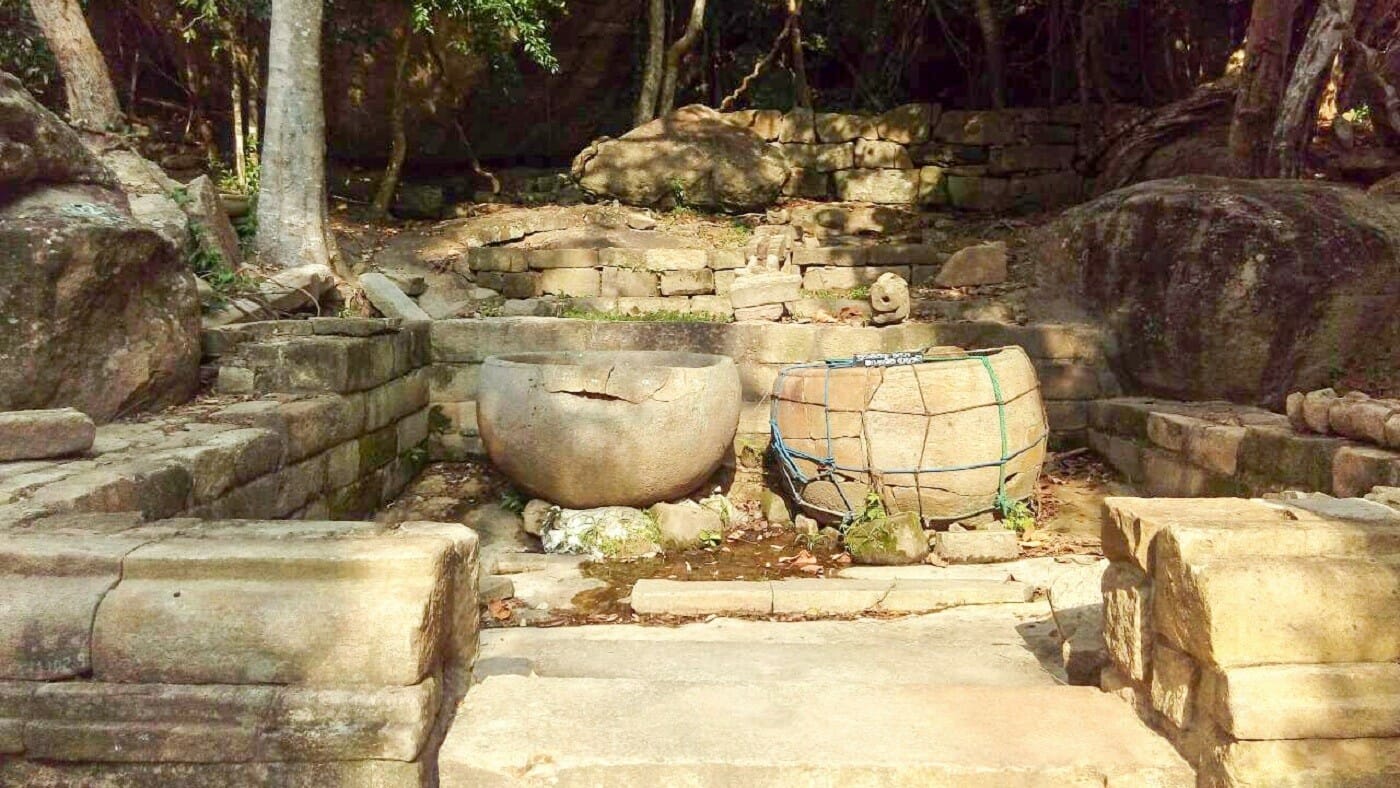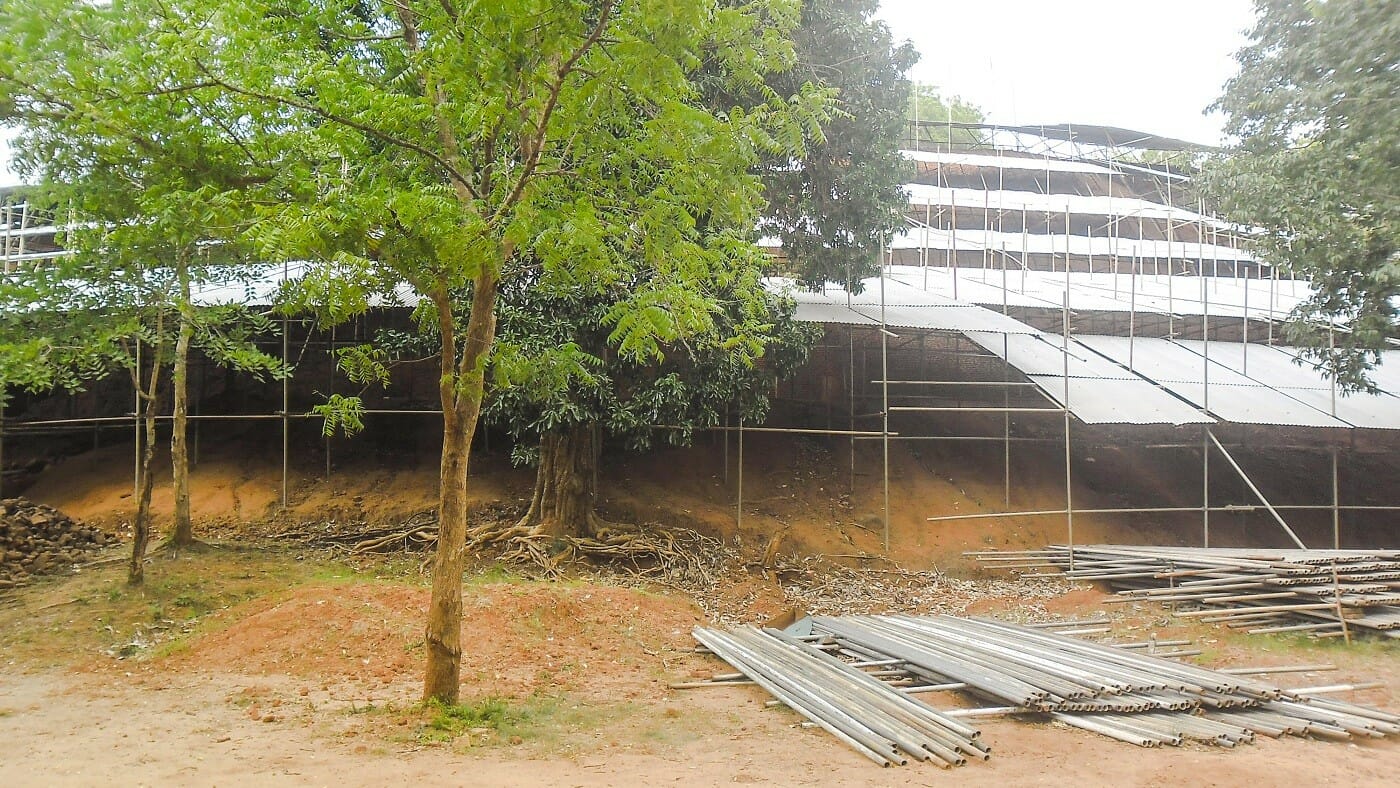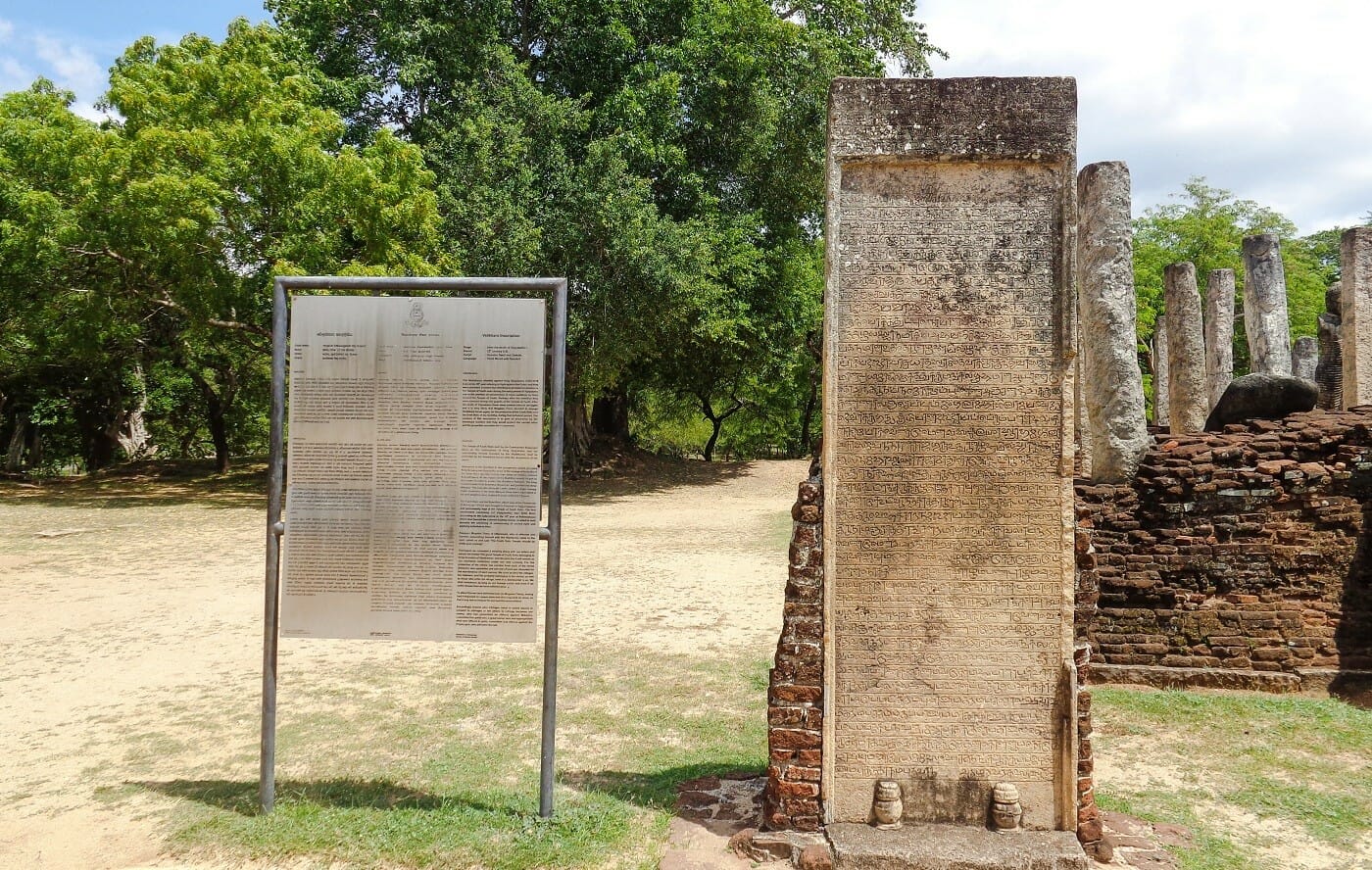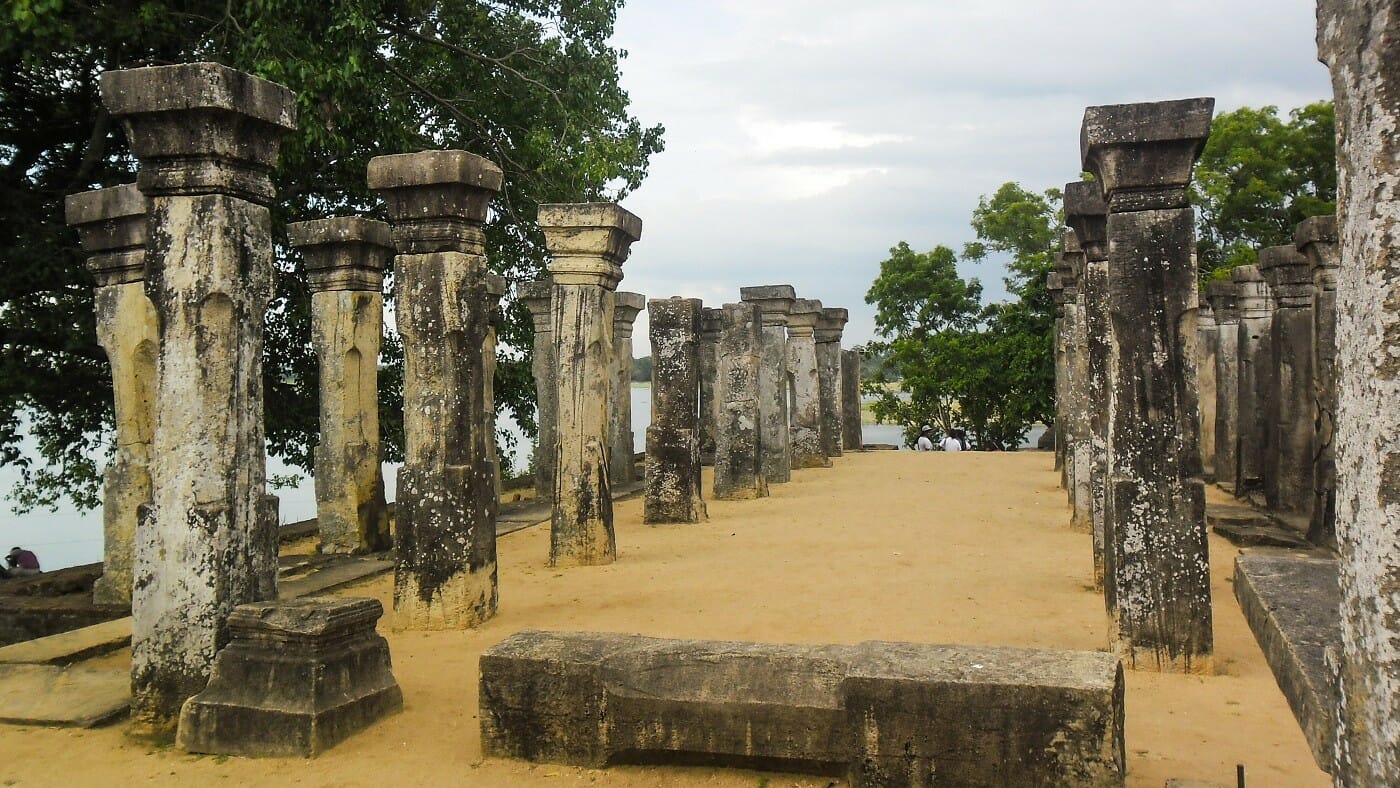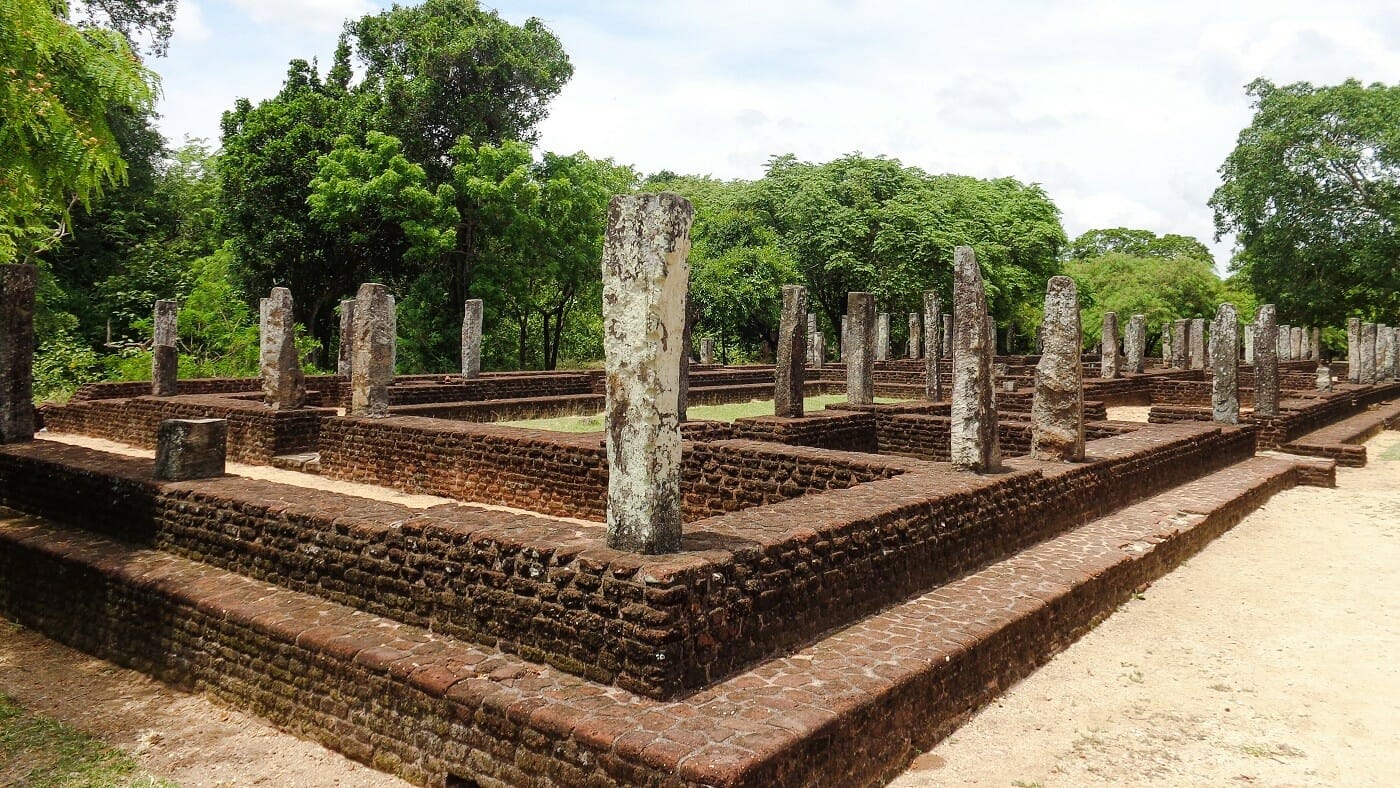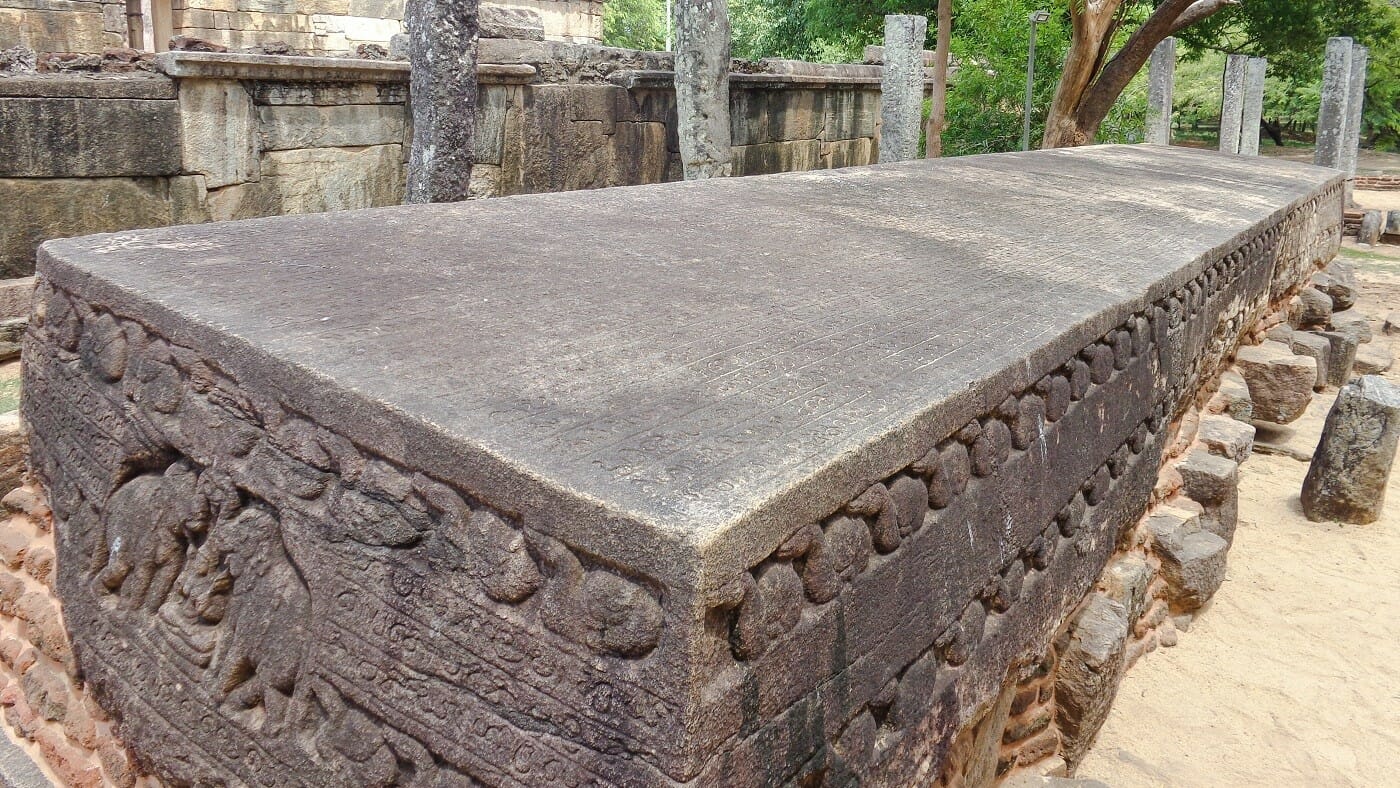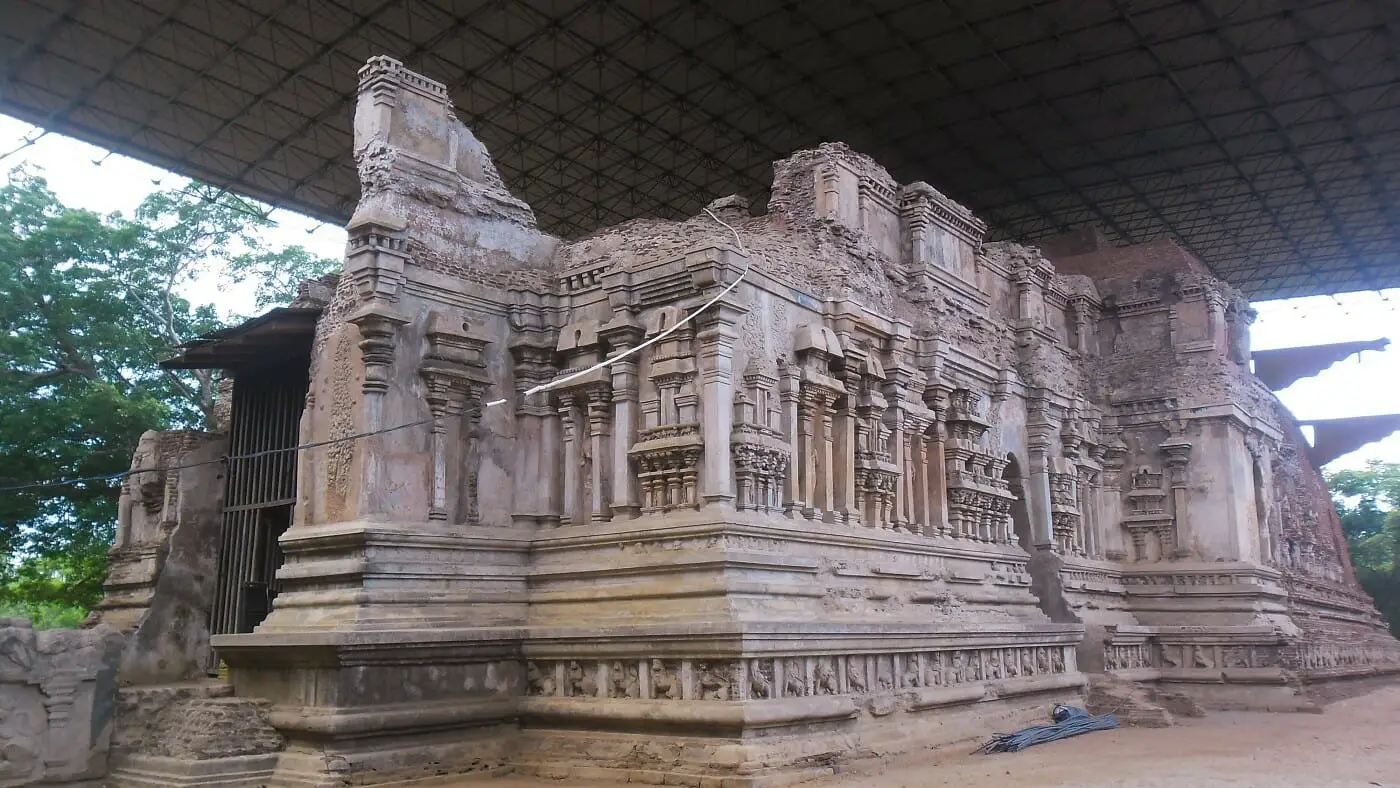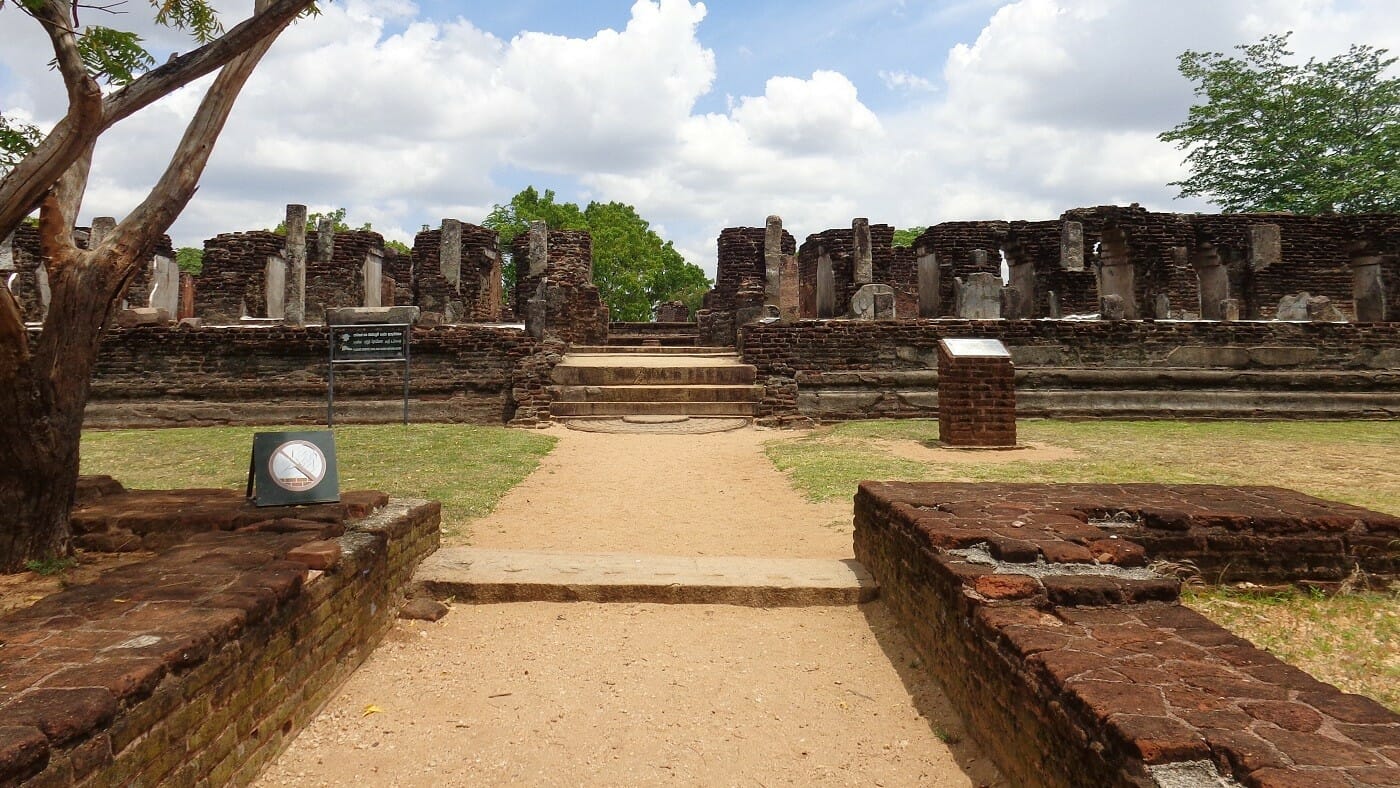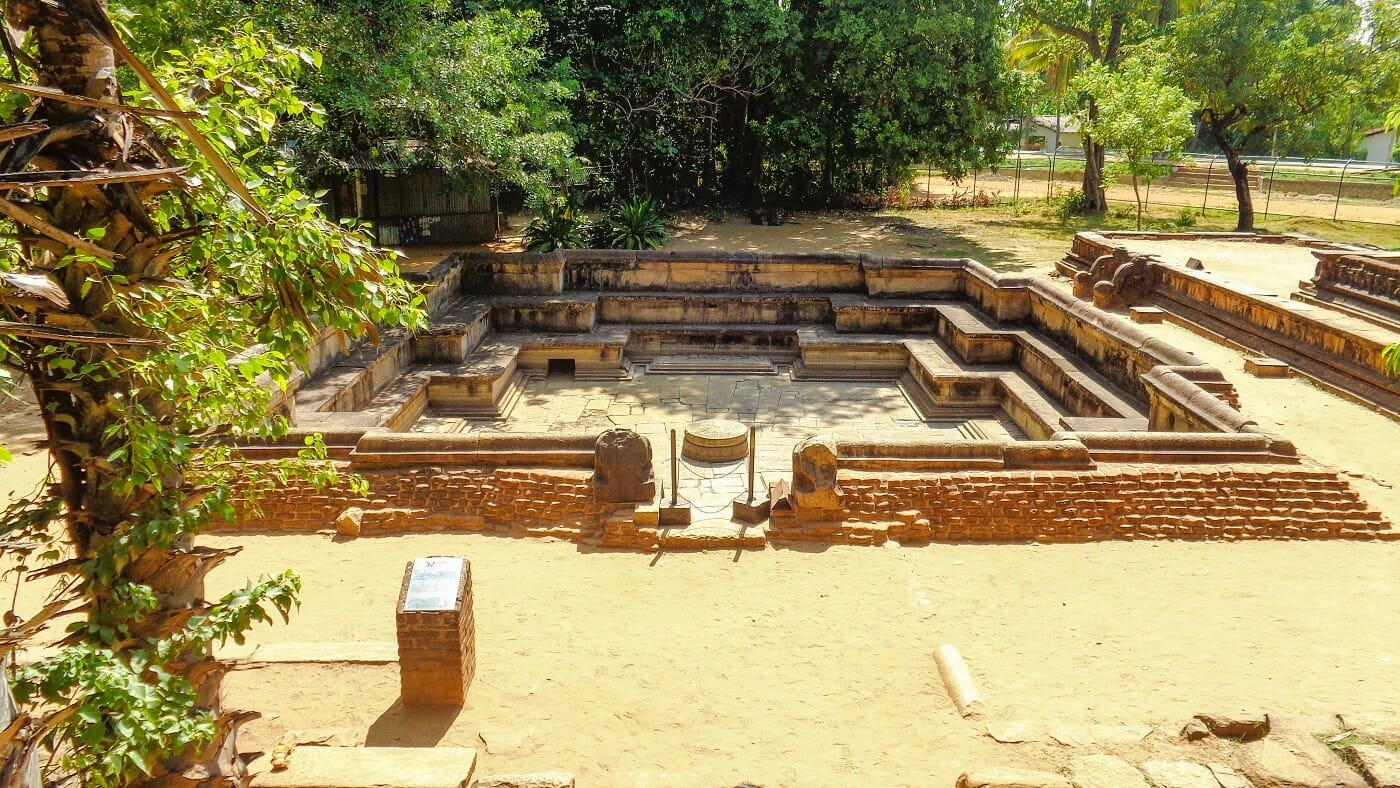If you are a historical traveler, Sri Lanka is one of the best destination for you. Sri Lanka has many amazing historical sites. Among them, Anuradhapura and Polonnaruwa are the main tourist attractions.
Favorite
The Fort Frederick is a fort built in 1624 CE by Portuguese as a military encampment at Trincomalee District in Eastern Province, Sri Lanka. It was built from the debris of the famous ancient Hindu Koneswaram temple that was destroyed by the Portuguese. It has been an important military site for centuries. In 1665 the fort was rebuilt by the Dutch and again it was taken over by the British in 1795. Although the Fort Frederick is used today by the Sri Lankan military you are allowed to explore some parts of it. The Gokanna Temple and the rebuilt Koneswaram Read more...
Favorite
Nestled in the heart of the Matale District, just a stone’s throw away from the iconic Sigiriya Rock Fortress, Pidurangala Rajamaha Viharaya is a sacred sanctuary with profound historical and religious significance. Famous for its tranquil atmosphere and panoramic views, Pidurangala combines a deep connection to Sri Lanka’s past with opportunities for adventure, nature, and breathtaking photography. A Glimpse Into the History of Pidurangala Pidurangala derives its name from the Sinhala phrase “Piduru Gala” (Straw Rock), said to signify its rugged terrain and untamed beauty. This ancient Buddhist monastery was established over 1,500 years ago by King Kashyapa I (473-495 CE). Kashyapa, while constructing Sigiriya Read more...
Favorite
Avukana Buddha Statue is a great masterpiece of sculpture which explain the competence of artist in ancient Sri Lanka. It is an over 40 feet high Buddha statue carved out of a great granite rock face built during the reign of King Dhatusena (455 – 473 AD). It is located in the vicinity of Kala Wewa in Anuradhapura district of North Central Province, Sri Lanka. In this is statue the Lord Buddha is depicted in Asisa Mudra which is a pose of blessing. Originally this statue had been placed inside an Image house and now you can see only the crumbling brick walls of Read more...
Favorite
Vijithapura Rajamaha Viharaya is an ancient Buddhist temple worshiped by Buddhist all around the country. The temple is located closer to the Kala Wewa in Anuradhapura district of North Central Province, Sri Lanka. You can access this temple through Kekirawa – Galewela road and only about 10km away from the Kekirawa temple. According to the historical sources (like Mahavamsa, Deepavamsa, Tupavamsa, and Saddharmalankaraya), the history of the Vijithapura area goes back to the reign of King Vijaya (543–505 BCE). The beginning of the Vijithapura Rajamaha Viharaya is not clearly identified. However, according to the legends, the history of the temple Read more...
Favorite
Enderagala Wana Senasuna is a Buddhist temple in a calm and quiet location in Dambulla in the Matale District of Sri Lanka. According to the inscription found in the caves, the history of this temple dates back to the 2nd – 1st century B.C. The temple is located beside the Ambepussa – Kurunegala – Trincomalee (A006) Highway, only 6km away from the Dambulla city. You can reach Enderagala Wana Senasuna withing15 minutes from Dambulla Cave Temple. The Stupa of the temple is located in a rock summit provide panoramic, 360-degree view of the area. On a clear day, you can Read more...
Favorite
This beautifully carved ancient statue is located near the Pothgul Vehera in the Polonnaruwa District of North Central Province, Sri Lanka. The identity of this statue is not yet confirmed and some believed it to be the statue of King Parakramabahu the Great (1123–1186). And others believed that it is the statue of great Saint called Pulasthi or Kapila. The statue is about 3.5m tall and carved into a large rock boulder. Enter your current location in the search box below the map to find the best route to the statue of King Parakramabahu the Great Click here to find a list Read more...
Favorite
Pothgul Vehera is located in the Polonnaruwa District of North Central Province, Sri Lanka. The Sinhalese name “Pothgull” has the meaning of “place to store books”. As such, with the other historical evidence, this ancient place has been identified as the oldest Buddhist library complex in the country. It was built by the King Parakramabahu the Great (1153-1186). Click here to find a list of accommodations around Polonnaruwa, Sri Lanka on Booking.com Read more...
Favorite
The Somawathiya Stupa is said to be enshrined the right tooth relic of Lord Buddha. It is located in Somawathiya Rajamaha Vihara premises in Polonnaruwa District of North Central Province. The area in which the temple located belongs to the Somawathiya National Park as well. The stupa was built during the reign of the King Kavanthissa (205–161 BC ) and it was named after his sister called princes Somawathi. Enter your current location in the search box below the map to find the best route to the Somawathiya Stupa. Click here to find a list of accommodations around Polonnaruwa, Sri Lanka. External Read more...
Favorite
Korathota Raja Maha Viharaya is an ancient Buddhist temple located in Kaduwela, Colombo District of Sri Lanka. This temple, which dates back to 2000 years, is one of the few ancient temples found in the Western Province, sited on the top of a mountain next to the Belungala Rock in Kaduwela. This temple boasts of having the oldest and longest cave inscriptions in the Colombo district. Enter your current location in the search box below the map to find the best route to the Korathota Raja Maha Viharaya. Click here to find a list of accommodations around Kaduwela, Sri Lanka. Read more...
Favorite
Muhudu Maha Viharaya is a Buddhist temple located in the Ampara District of Eastern Province, Sri Lanka. According to the historical evidence, the history of this temple goes back to the reign of King Kavantissa (205-161 B.C.). The temple is located on the Potuvil coast and it is believed to be the place where Viharamahadevi, the daughter of King Kelani Tissa was landed as said in the legend. External Links මුහුදු මහ විහාරයේ අද කතාව – Silumina Muhudu Maha Vihara – Department of Archaeology Three women in Sinhala history – The Island Read more...
Favorite
Mahiyangana Rajamaha Viharaya is an ancient Buddhist temple located in Badulla District of Uva Province, Sri Lanka. it is one of the Solosmasthana (16 most sacred places to be worshiped by Buddhist in Sri Lanka), and it is believed to be the place where the Lord Buddha’s first visit to the country. According to the historical sources, Buddha visited this place in the ninth month after he attained enlightenment. External Links වසර 2600කට පෙර බුදුන් වැඩිය මියුගුණ පුදබිම Read more...
Favorite
The Sankapala Raja Maha Viharaya is located in the Ratnapura District of Sabaragamuwa Province, Sri Lanka. According to rock inscription found here, the history of this temple goes back to the reign of King Dutugemunu (161-137 BC). As said by the legends, there had been Ten Giants in king Dutugemunu’s troops. The giant Pussadeva is one of them who had a special skill of blowing conch shells (“Sankha” in Sinhala) so loudly. The symbol of the giant was also the conch shell itself. After winning the Vijithapura war, the king Dutugemunu has offered this area to the Pussadeva giant. Later, he has Read more...
Favorite
The Dematamal Viharaya is an ancient Buddhist temple in the Okkampitiya village in Monaragala District, Sri Lanka. The history of this temple dates back to the 2nd – 3rd century BC. According to the legend, this is the temple which the King King Saddhatissa hid after being defeated in the battle with King Dutugemunu (Brother of King Saddhatissa). External Links ගැමුණු කුමරුට බියේ තිස්ස කුමරු සැඟවී සිටි දෙමටමල් විහාරය දෙටුමල් නමින් බිහිවූ දෙමටමල් විහාරය Read more...
Favorite
The Maligavila sacred place is famous for its giant free-standing Buddha Statue belongs to 7th century. It is located in the Monaragala District of Uva Province, Sri Lanka. According to the ancient chronicle Chulavamsa, the Statue has been made by a Prince named Aggabodhi. The Buddha statue is 14.5m tall and it has carved out of a single limestone. Initially, there had been an image house surrounding this statue and the foundation of it can still be seen today. At about 500 m to the southeast, there is another statue called Dambegoda Bodhisattva Statue. According to the Mahavamsa, this statue has been Read more...
Favorite
The Girihandu Seya stupa is located in Thiriyaya in Trincomalee District of Eastern Province, Sri Lanka. According to the legend, this is the stupa mentioned in the story of Thapassu and Bhalluka two traders. As such, it is considered to be the first Stupa built by enshrining the relic of Lord Buddha and probably it was built around 528 B.C. The stupa was originally a small in size and had been renovated in the 8th century A.D. The Vatadage encircling stupa was built during the renovation. External Links Thiriyaya Girihandu Seya Thiriyaya – Department of Archaeology Read more...
Favorite
The Rajagala Monastery is a sacred site in which history dates back to the Advent of Arhath Mahinda Thera. This place is in the Uhana area of the Ampara District in Eastern Province, Sri Lanka. The archaeological excavation is still underway and it is one of the largest archaeological sites in Sri Lanka with 1025 acres. The rock inscription found here regarding the Arhat Mahinda Thera is the most valued inscription of archaeological interest. According to the archaeological discoveries, the area had been inhabited from the prehistoric times. You can read more about this site from the external links given below. Read more...
Favorite
Demalamaha Seya is an ancient stupa built by the King Parakramabahu (1153-1186). It is located in the main archaeological site in the Polonnaruwa District of North Central Province, Sri Lanka. As it was described in the ancient chronicle Mahawansa, the stupa named “Demalamaha Seya” was with a height of approximately 1300 cubit (594.36 m). Presently this brick built stupa has a perimeter of 600 m and height of 25.65 m. The excavation and the conservation project of the Demalamaha Seya was commenced by the Central Cultural Fund in 2014. n.b. These photos were taken in October 2017 External Links Bringing back Read more...
Favorite
Velaikkara Inscription is an ancient inscription carved on a stone located in the Dalada Maluwa premises of main archaeological site in Polonnaruwa District of North Central Province, Sri Lanka. The Velaikkaras rebelled against King Vijayabahu (1055 – 1110 A.D.) in his 30th year refusing to fight against the Colas and they were punished. It seems that Velaikkaras provided protection to the Temple of Tooth even during the early period of Viajayabahu due to the mention of construction of some building by them around the Temple of Tooth. Perhaps after the rebellion, they were removed beings the guards of the Temple of Read more...
Favorite
This building has been identified as the Council Chamber of King Nissankamalla (1187 – 1196 A.D.). An inscription on the lion figure made of the stone itself identifies as the throne of the king. And the inscriptions on the pillars indicate the seating arrangement of the respective ministers and state officials. This Council Chamber is located in the Dipauyana premises in Polonnaruwa District of North Central Province, Sri Lanka. You can access it through the Archaeological Museum or by the footpath (Royal Palace Pathway) which is starting in front of the entrance to the main archaeological site. Read more...
Favorite
This monastic hospital is located in the Alahana Piriwena premises of the main archaeological site in Polonnaruwa District of North Central Province, Sri Lanka. The archaeological excavations have confirmed this building as a monastic hospital constructed in the 12th century. A medicine trough (Behet Oruva)made of stone is still can be seen in one room. This medicine trough had been used for treating patients by immersing in herbal oil. Several surgical and medical instruments also have been discovered during the excavations at this site. There are two main sections in this building namely living and treatment sections. Both sections have open courts Read more...
Favorite
Gal Potha (Stone Book) is a giant stone inscription located in the Dalada Maluwa premises of main archaeological site in Polonnaruwa District, Sri Lanka. It is a work of King Nissankamalla (1187-1196) and it is the largest stone inscription discovered so far. The inscription itself tells that this large stone was transported from Minintale, some hundred kilometers away from Polonnaruwa. It describes the genealogy, heroic and altruistic deed of King Nissankamalla. The letters of the inscription were embossed with molten iron. The figure of the woman on the side face of the stone on whom two elephants are sprinkling water has been identified as Goddess Gajalakshmi (Goddess Read more...
Favorite
Tivanka Image House is identified as the image house of Jetavanaramaya Monastery built by the King Parakramabahu the Great (1153 – 1186). It is located in the main archaeological site of Polonnaruwa District in North Central Province, Sri Lanka. The name Tivanka (means three bends) is given due to its giant Buddha image is bent at three places, namely shoulder, hip, and knee. The image house is famous due to the paintings on its interior walls. The paintings belong to the 12th century and they depict certain incidents from Jataka Stories and the life of Buddha. Like Thuparamaya and Lankathilaka, this image Read more...
Favorite
Baddhasima Prasadaya is the Pohoyageya or Uposathagharaya (Chapter House) of the monks of Alahana Piriwena where they rehearsed the codes of discipline (Especially the pati mokka). It is located in Polonnaruwa District of North Central Province, Sri Lanka. The remaining pillars and brick walls suggest that there had been a multi-storied building and according to the Mahavamsa, there had been a twelve storied building. As such, this may be the largest of the Uposathaghara in the Island. The central Platform of the building was to locate the relic casket while four monks seated on the stone pedestal facing the cardinal directions read the code of Read more...
Favorite
This pond or royal bath is presently known as “Kumara Pokuna” is believed to be the Pond named “Sila Pokkharani” mentioned Mahavamsa. The pond is located next to the Council Chamber of King Parakramabahu in Polonnaruwa District of North Central Province, Sri Lanka. According to Mahavamsa, the pond was built by King Parakramabahu the Great (1153 – 1186 A.D.). The pond is located such a way that it can get water from the Parakrama Samudraya tank and it has provided with outlets to drain off the used water. The water was supplied to the pond by the two dragon mouths located Read more...
